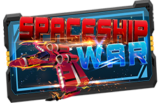Casual Games and NFTs
Casual gaming has experienced a remarkable surge in popularity, captivating a diverse audience with its easy-to-learn gameplay mechanics and entertaining experiences. In recent times, the emergence of Non-Fungible Tokens (NFTs) has added a new dimension to the casual gaming industry, revolutionizing how players interact with and own in-game assets. This article explores the intersection of casual games and NFTs, highlighting their impact on the gaming landscape and the potential opportunities they present for both players and developers.
The Rise of Casual Games
Casual games, known for their simple gameplay mechanics and accessibility, have gained immense traction in the gaming industry. These games cater to a broad audience, from seasoned gamers to casual enthusiasts, offering quick and enjoyable experiences that can be easily picked up and put down. With the widespread use of smartphones and the advent of app stores, casual games have become a dominant force in the gaming market, reaching millions of players worldwide.
The Introduction of NFTs
Non-Fungible Tokens (NFTs) have revolutionized the concept of digital ownership by leveraging blockchain technology. Unlike cryptocurrencies such as Bitcoin, NFTs represent unique digital assets, enabling verifiable ownership and scarcity. NFTs have gained prominence in various domains, including art, collectibles, and now, gaming. They allow players to own and trade unique in-game items, creating new avenues for player engagement and monetization.
The Convergence of Casual Games and NFTs
The integration of NFTs into casual games has introduced exciting opportunities for players and developers alike. With NFTs, players can truly own their in-game assets, empowering them to buy, sell, and trade items directly on blockchain-powered marketplaces. This ownership extends beyond the boundaries of a single game, as players can retain the value of their assets across multiple games and platforms.
Benefits for Players
- Sense of Ownership: NFTs provide players with a tangible sense of ownership, as their in-game assets have inherent value and can be securely stored in digital wallets.
- Player-Driven Economies: The ability to trade assets on open marketplaces introduces player-driven economies, where players can profit from their virtual investments.
- Interoperability: NFTs allow players to transfer assets between different games, enabling a seamless experience across various platforms.
Opportunities for Developers
Developers of casual games have embraced the integration of NFTs, opening up new avenues for revenue generation and player engagement. By incorporating NFTs, developers can create unique and rare in-game items that players can collect, trade, and showcase. This introduces an additional layer of monetization, as developers can earn royalties from the secondary market transactions of these NFTs. Furthermore, the use of NFTs fosters passionate communities, driving player retention and creating a sustainable ecosystem around the game.
Table: Examples of NFT Integration in Casual Games
| Game Title | NFT Integration Features |
| Game A | Collectible NFT characters and accessories |
| Game B | Tradable NFT cards and in-game assets |
| Game C | NFT-based in-game land ownership |
| Game D | Limited edition NFT virtual pets |
In conclusion, the convergence of casual games and NFTs has brought about exciting possibilities for players and developers alike. NFTs offer players true ownership of in-game assets, empowering them to trade and profit from their virtual possessions. For developers, integrating NFTs presents new monetization opportunities and the ability to foster passionate communities. As the casual gaming industry continues to evolve, the incorporation of NFTs is likely to shape the future landscape, creating immersive and rewarding experiences for all involved.
